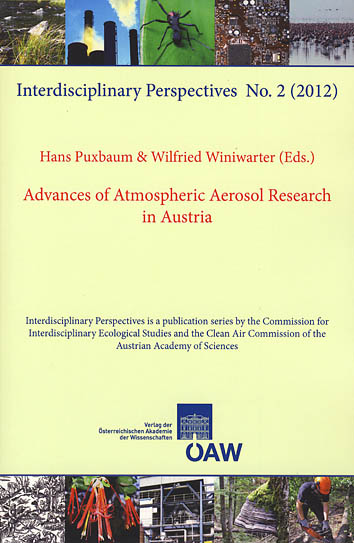

Aerosols exert decisive influence to important properties of the atmosphere. Aerosols represent low concentrations of fine particles in the surrounding atmosphere which exist in solid or liquid phase. The phase difference is critical for aerosol effects to
• the optical properties of the atmosphere (The radiation balance is affected by absorption or reflection of light on surfaces, with consequences to climate)
• cloud formation (particles are nuclei for condensation of cloud droplets, affecting weather and climate)
• atmospheric chemistry (particle surface enables and catalyzes transformation of air pollutants)
• health (particles may become trapped in the respiratory tract or transfer into the cardiovascular system causing inflammations)
Furthermore, fine particles may remain airborne over large distances and are important for the transport of biologically important trace compounds. They also contribute to global distribution of prebiotic structures as well as viruses, bacteria ore fungal spores.
This volume compiles the achievements and contributions of Austrian research to this important field. Members from the Clean Air Commission of the Austrian Academy of Sciences and guest authors provide an overview of the state of science in Austria in its relationship to the international advances. Starting from developing measuring instruments to the results and interpretation of field campaigns, the contributions also show how measurement results are apportioned to individual sources, and how their health impacts are quantified. Another strand of methods includes emission modelling and simulation of emission abatement options, which furthermore serves to assess the regional distribution of air pollution as well as the global circulation in terms of establishing its impact to climate.
The health impacts of aerosols are at least discussed in the public debate, while still not leading to the implementation of emission abatement as would be needed. The exploration of aerosol in its relation to climate has not even arrived at that stage. Considerable additional scientific attention is required. Further studies are needed on quantifying the effects of „dark“ absorbing aerosol that acts like a greenhouse gas, versus the reflecting „white“ aerosol which decreases any warming effect from anthropogenic activities. This theme will be covered to some extent by the upcoming 5th IPCC assessment report, but moreover provide ample opportunity to further contributions of Austrian aerosol scientists to a global benefit.
From the contents:
W. Winiwarter, Inventorying PM emissions; W. Höfinger, Fugitive dust emission abatement; R. Hitzenberger, Physical parameters of atmospheric aerosols; R. Hitzenberger - H. Bauer, Black and brown carbon; H. Bauer, Bioaerosols; A. Kasper-Giebl, Aerosol scavenging experiments; A. Berner - R. Hitzenberger, Time series of correlation coefficients of atmospheric PM; H. Puxbaum, Aerosol source-receptor studies; M. Neuberger, Human health effects; D. Haluza, In vitro research work; M. Amann, Integrated assessment modelling; H. Hauck, Austrian project on health effects of particulates; W. Winiwarter, Outlook
2012
978-3-7001-7364-9
978-3-7001-7566-7
144 pages,
22,5x15cm